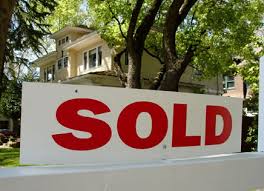 Or what should be, is a sign saying… “Home Sellers Wanted”!
Or what should be, is a sign saying… “Home Sellers Wanted”!
–>
“January’s inventory data suggest a continuation of the tightening trend we identified last month in the December data, and with a shortage of inventory typically comes increased home prices,” says Jonathan Smoke, chief economist at Realtor.com. “Half of the 200 markets realtor.com tracks experienced year-over-year price increases of at least 6 percent in January.”
The National Association of REALTORS® reported this week that January existing-home sales plummeted nearly 5 percent year-over-year, a nine-month low.
“This is a notable speed bump,” says Lawrence Yun, NAR’s chief economist, Lawrence Yun. He says home sales should be higher given the recent pick ups in the economy and job market and rising rental costs.
But despite the higher buyer demand, he says the weak supply has become a big issue.
Housing inventories are down by some of the largest amounts year-over-year in Las Vegas; Key West, Fla.; Colorado Springs, Colo.; Palm Bay, Fla.; and Columbus, Ohio, according to realtor.com’s January National Housing Trend Report. (Read: Inventories Tighten Up Again)
“Typically for a home seller in the past, they live in their home for seven years and then make a move,” Yun says. “Now we’re seeing home sellers are living in their home for 10 years
Are you looking to Sell and think that waiting will be better?
Not necessarily, not with inventory being as tight as it is.
Call me to find out your options and home market value.
Paula Allin – HomeSmart Professionals
401-241-2976 or PaulaSoldit@cox.net
Check out current market trends on my website: http://www.PaulaAllinRealEstate.com
Look for the “Market Insider” tab










